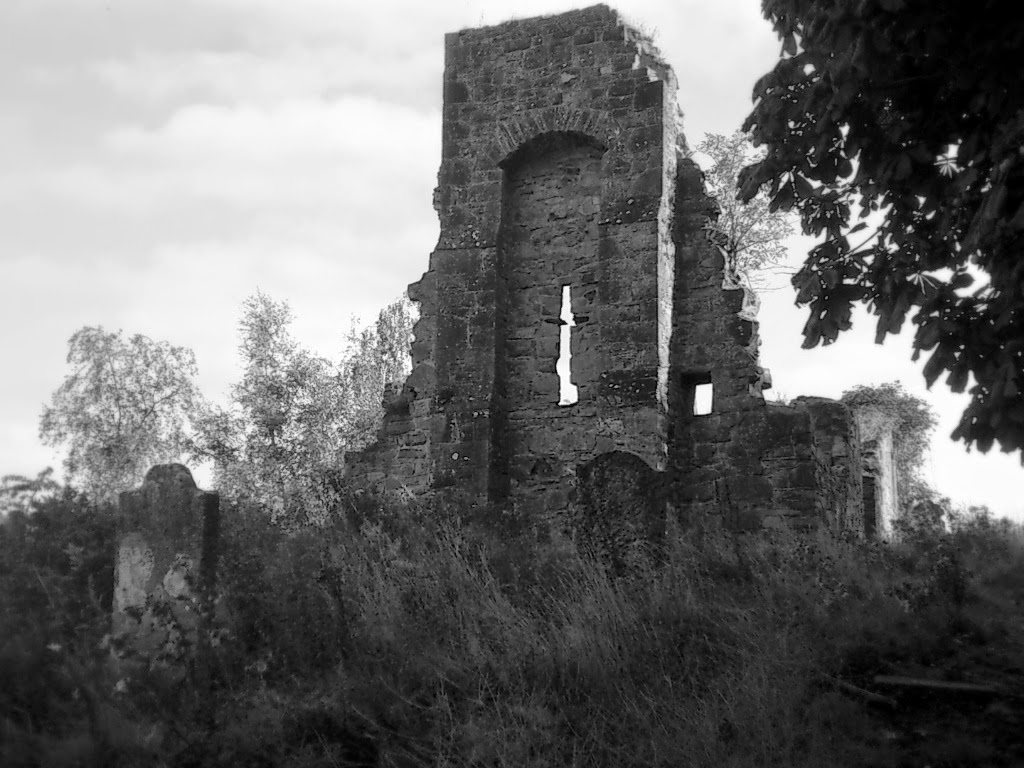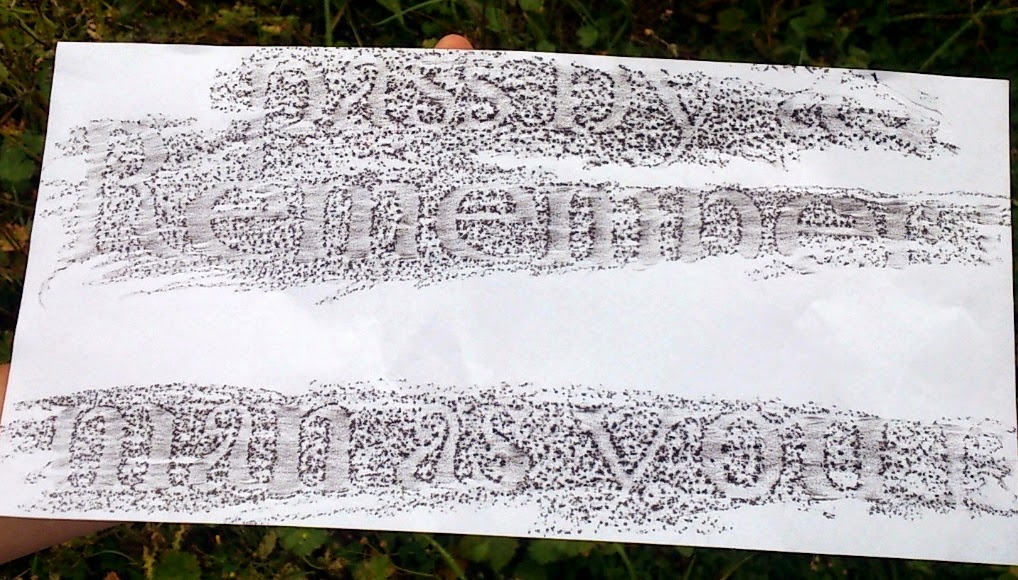Here is some information from South Dublin County Council's Griffeen Valley Park booklet:
On the summit of one of the nearby hills overlooking Esker Lane and the Griffeen Valley Park, just north of King John's Bridge, lie the ruins of the medieval parish church of Esker, probably dating from the 12th century. In earlier times, it stood in a commanding position overlooking the former village of Esker. In the early 1200s, King John gave the church to St. Patrick's Church in Dublin, and when St. Patrick's became a cathedral, the dean had a right to the church at Esker, which he dedicated to St. Finian. It is recorded that in 1830 there was a private school based beside the ruins of St. Finian's Church. It was run by a Mr. Sturgeon and provided a classical education for boys only.
St. Finian's Church was a long plain rectangular building, built of roughly coursed masonry. During the sixteenth century it was extensively rebuilt and re-roofed in timber. In 1615 the church was recorded as being "in repair", but the chancel was in ruins. Later that century, the church was recorded to be in a ruinous state. Today, only the belfry end and some parts of the north and
south walls remain.
In the wall of the ruin there is reputed to be a cavity shaped like a chalice. There was a local tradition whereby people were cured of eye ailments by dipping their fingers in the water from the chalice and using it to wash their eyes. Another reputed cavity in a nearby stone is known as the 'Devil's Foot'. The story goes that anyone who puts his or her hand or foot in the cavity will be unable to remove it.
Within the ruins of the church are several graves, some with headstones dating back to the early 1700s. Information is known about some of the people buried there such as Fr. James MacCarten, R.C. Lucan, who was murdered in Lucan. On the night of the 3rd of June 1807, Fr. MacCarten was returning home from Palmerstown when at the Hill of Lucan, today known as Chapel Hill, he was set upon by a gang of robbers who robbed and shot him dead unaware of the fact that he was a priest. A stone monument set in the wall outside St. Andrew's Church of Ireland School commemorates the event.
We worked as historians while exploring the ruin, seeking information about the people buried here.
More photos from our field trip can be seen here.



